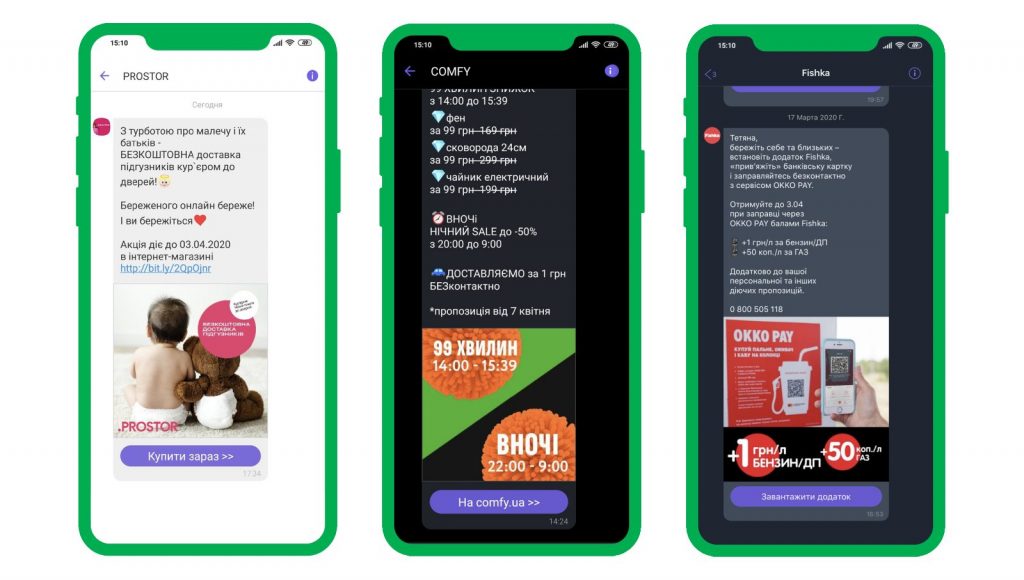“Is it worth putting your marketing activities on hold in times like these?” This issue has become more relevant with the quarantine measures being introduced all around the world. The short answer is no. Your customers need your support, and now it’s especially important to stay in touch.
Although severe cost reduction is many brands’ frequent first reaction to the crisis — with marketing budgets often being the first to suffer — the catch is that regular, consistent communication with customers is now more important than ever. Customers that endure the challenges together with you will stay loyal for a long time.
The purpose behind any business is to offer a product or service that benefits a specific target audience. While marketing helps to engage or inform potential customers, the purchase is only made if you offer a solution to a problem or need. Although customer needs might have changed in the current situation, they still must be satisfied. Which means there are steps to be taken to support your consumer.
Revisit your primary channels of communication
Digital marketing tools are now vital for maintaining customer relationships. Webinars, messengers, newsletters, pre-recorded video, and videoconferences have now become a must (considering that video call is currently the only way to have dinner with a client in many countries). Brands that are traditionally associated with face-to-face contact and clients’ personal experience, such as restaurants or sports clubs, lose their main point of contact with the consumer during the quarantine. But this does not mean that you must let go of your client. You can remind them about your brand through social media and continue to offer your services and products: be it the gourmet meal delivery or online fitness coaching for home workouts.
Remember: silence is not what the client expects to hear from you, being in forced retreat. Consumers want to see that you own the situation, that you are flexible and innovative enough to continue to provide services in new circumstances. Additionally, crisis is an excellent opportunity for brands to improve their reputation by instilling confidence in their customers and introducing initiatives that are important for society — by either providing financial/material support or a free access to content that makes it easier to endure isolation.
Do you have sufficient digital presence?
Your website, mobile apps, social media accounts, and marketing materials are now your primary channels of communication.
- All the information a client needs to contact your team, purchase products or receive support should be easily accessible on your site. Clearly indicate whether your physical POPs are open, provide their operating hours, terms of delivery, phone numbers and links to instant messengers.
- Put out the most useful information about COVID-19 on your site. Think the YouTube homepage, which directs users to the World Health Organisation website, videos from the Centres for Disease Control and Prevention or other local health authorities, depending on the user’s geographic location.
- It’s time to make sure that your business is sufficiently represented in the search engines. Check how your site’s meta descriptions and pages appear in search engines. Study how customers’ search queries might have changed along with their needs, and apply the necessary changes: Google Trends, Google Search Console and similar tools will help you with this. By carefully monitoring changes in search queries, you can adapt your approach and stay visible for your audience.
- How is your brand represented on social media, and are given social networks relevant to your audience? Especially now, when those networks are the only way to satisfy people’s deep need for socialisation. For example, according to Kantar, people have become 37% more active on Facebook and 40% more in WhatsApp.
Analyse the new needs of your customers, their wishes, and the problems they face. Adapt your communications and use customer-friendly channels to convey your willingness to support the consumer.
Following these principles, Prostor — the cosmetics, perfumes, and personal care store — has adapted its customer interaction format by transferring all activities online, making it easier for its clients to purchase essential goods, while also keeping them aware of any special offers.
Likewise, COMFY — the first omnichannel retailer of household appliances and electronics in Ukraine — has transferred all activities online and came up with a contactless delivery option to protect both its customers and employees.
The OKKO gas station network has been promoting the concept of contactless payments for a while now. The OKKO Pay service allowed customers to avoid queues and save money using a QR code and paying via the application. Now it also serves as additional protection, helping its users to maintain a safe distance in any circumstances.

Stay in touch
Take a deep breath. The situation in which we are now will most likely not resolve itself soon. Make informed decisions that will help you and your customers get out of it with minimal loss. And monitor your communication carefully: you should provide even more flawless service in a timely manner, without provoking a panic.
What can be changed?
Although you need to continue marketing activities during the COVID-19 situation, this does not mean that you should act as if nothing has changed:
- Pay attention to the tone of your communications. Make it clear that you understand what problems your customers face because you and your employees also face them. Show your human face, prove that you feel your client and are ready to help.
- Don’t be afraid to experiment with new formats and tools that will help you interact with your audience more effectively.
- Explain your motivation and what you do in the light of current events to your clients.
The COVID-19 crisis has disrupted our usual business flow, and this is another incentive for development: it is vital to be quick and flexible, finding tools that will help you stay in touch with customers, convey news and offers, and make sure that customers can both purchase your goods and services, and get your help.
Now, more than ever, it is vital to be there for your customers, share best practices that will help make their lives better, and finally — to continue telling your story.


